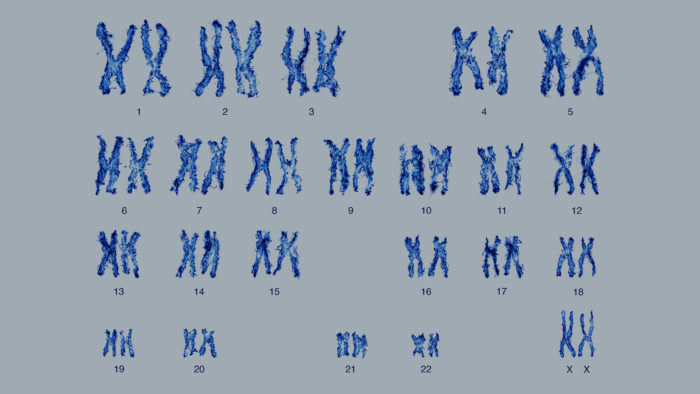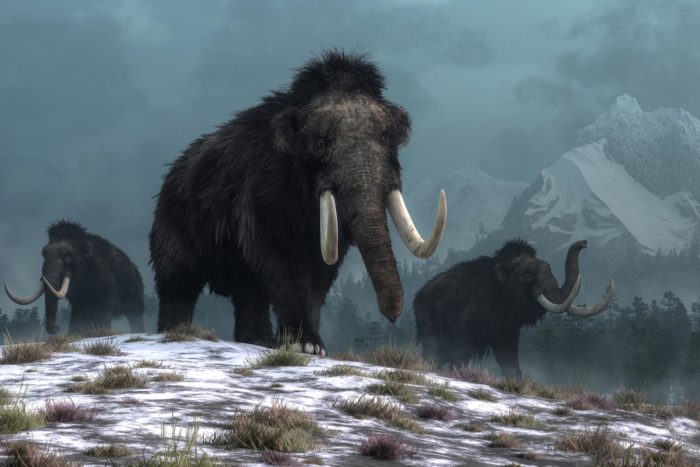Feb
03
2022
 In evolutionary parlance, “conserved” means that some feature has remained relatively unchanged through some period or within a specific clade. Generally features will change over evolutionary time, either through direct selective pressures or genetic drift through random mutations. Therefore, in order for a biological feature to be conserved there must be selective pressure that keeps it from changing. The longer and more tightly that feature is conserved, the more fundamental it must be to biological function. Histones, for example, are proteins that help manage the long strings of DNA in cells – an extremely basic function for all life. Histones are also one of the most conserved proteins in all of biology.
In evolutionary parlance, “conserved” means that some feature has remained relatively unchanged through some period or within a specific clade. Generally features will change over evolutionary time, either through direct selective pressures or genetic drift through random mutations. Therefore, in order for a biological feature to be conserved there must be selective pressure that keeps it from changing. The longer and more tightly that feature is conserved, the more fundamental it must be to biological function. Histones, for example, are proteins that help manage the long strings of DNA in cells – an extremely basic function for all life. Histones are also one of the most conserved proteins in all of biology.
It is therefore highly interesting that researchers recently found that chromosomal elements are highly conserved in virtually all animal groups over 600 million years – which is basically as long as animals have existed. Chromosomes are the organizing units of DNA. Humans, for example, have 23 pairs of chromosomes. Each chromosome contains a number of genes, and humans have about 20,000 functional genes.
Biologists have long known that sequences of genes tend to sort together – they always occur next to each other on the same chromosome, even across species. However, different clades have different numbers of chromosomes and different gene clusters on different chromosomes. Genes, it seems, get shuffled around during evolutionary history. Scientists and the University of Vienna and the University of California were working together to see if they could make more sense out of this chaos, and that’s what they did.
Continue Reading »
Feb
01
2022
 About 12 thousand years ago the late Pleistocene was transitioning to the current Holocene. This transition was marked by the end of the last glacial period, and turnover of entire ecosystems to a new homeostasis. Specifically in the Arctic North America, the mammoth-steppe biome was transitioning to the boreal forest we know today. As the name suggests, the most famous of the megafauna of the late Pleistocene was the woolly mammoth, and a lot of research has focused on nailing down the exact date when the woolly mammoth went extinct.
About 12 thousand years ago the late Pleistocene was transitioning to the current Holocene. This transition was marked by the end of the last glacial period, and turnover of entire ecosystems to a new homeostasis. Specifically in the Arctic North America, the mammoth-steppe biome was transitioning to the boreal forest we know today. As the name suggests, the most famous of the megafauna of the late Pleistocene was the woolly mammoth, and a lot of research has focused on nailing down the exact date when the woolly mammoth went extinct.
Dating the lifespan of a species is always a matter of finding the earliest and latest evidence for its existence. Such date ranges are always an underestimation, because it’s unlikely that we have discovered the very first or very last specimen, so it is very common for new fossil discoveries to expand the known date range. This is why headlines such as, “Woolly Mammoths Survived Longer than Previously Thought” are extremely common. Of course they did – most extinct species survived longer than we currently think.
However, it is not common that scientists hit upon an entirely new method for exploring the past and dating species, but that is what is happening now. Researchers from the McMaster Ancient DNA Centre are pioneering a technique to explore ancient environmental DNA. This is made possible by the extreme advances in genetics technology over the last few decades. Already environmental DNA is giving us a new powerful tool to explore ecosystems. We no longer have to track and tag representatives of all the species in an environment to get a sense of what plants and animals live there. We can just take a few scoops of soil and water and sequence the environmental DNA that we find. Every living things sheds DNA into the environment, and as their remains decay into the soil and water it spills their DNA for scientists to find later. My favorite application of environmental DNA technology is a survey of Loch Ness showing the complete absence of DNA from a plesiosaur or any similar creature.
Continue Reading »
 In evolutionary parlance, “conserved” means that some feature has remained relatively unchanged through some period or within a specific clade. Generally features will change over evolutionary time, either through direct selective pressures or genetic drift through random mutations. Therefore, in order for a biological feature to be conserved there must be selective pressure that keeps it from changing. The longer and more tightly that feature is conserved, the more fundamental it must be to biological function. Histones, for example, are proteins that help manage the long strings of DNA in cells – an extremely basic function for all life. Histones are also one of the most conserved proteins in all of biology.
In evolutionary parlance, “conserved” means that some feature has remained relatively unchanged through some period or within a specific clade. Generally features will change over evolutionary time, either through direct selective pressures or genetic drift through random mutations. Therefore, in order for a biological feature to be conserved there must be selective pressure that keeps it from changing. The longer and more tightly that feature is conserved, the more fundamental it must be to biological function. Histones, for example, are proteins that help manage the long strings of DNA in cells – an extremely basic function for all life. Histones are also one of the most conserved proteins in all of biology.
 About 12 thousand years ago the late Pleistocene was transitioning to the current Holocene. This transition was marked by the end of the last glacial period, and turnover of entire ecosystems to a new homeostasis. Specifically in the Arctic North America, the mammoth-steppe biome was transitioning to the boreal forest we know today. As the name suggests, the most famous of the megafauna of the late Pleistocene was the woolly mammoth, and a lot of research has focused on nailing down the exact date when the woolly mammoth went extinct.
About 12 thousand years ago the late Pleistocene was transitioning to the current Holocene. This transition was marked by the end of the last glacial period, and turnover of entire ecosystems to a new homeostasis. Specifically in the Arctic North America, the mammoth-steppe biome was transitioning to the boreal forest we know today. As the name suggests, the most famous of the megafauna of the late Pleistocene was the woolly mammoth, and a lot of research has focused on nailing down the exact date when the woolly mammoth went extinct.




